If you’ve been paying attention to the headlines, you might be wondering, “Why are mortgage rates going up when the Fed is cutting rates?” That seems backward, right? Well, you’re not alone—this is a point of confusion for many homebuyers and homeowners. The truth is, there’s more going on behind the scenes than you might think.
Let’s break it down in a way that makes sense, so you’re in the know the next time you’re thinking about buying or refinancing your home.
What’s Causing Bond Yields (and Mortgage Rates) to Rise?
Lately, global bond yields have been moving sharply higher. But here’s the thing—there isn’t just one big reason for this spike. Instead, it’s a cocktail of different factors stirring up the market.
- Stronger jobs data in the U.S. suggests the economy is doing better than expected.
- China is boosting its economy with big stimulus measures, which creates ripples across global markets.
- Investors are pricing in fewer rate cuts from the Fed than they thought we’d see.
All of these forces are pushing bond yields higher—and higher bond yields mean higher mortgage rates. But why? Let’s dive in.

The Fed vs. Mortgage Rates: What’s Really Happening?
Just this week, we heard from four Federal Reserve members. While they’re not hitting the brakes on cutting the Fed Funds Rate, they’re doing it cautiously. There’s still a good chance we’ll see two more cuts by the end of the year.
But here’s the kicker: even though the Fed cut rates by 0.50% in September, 30-year mortgage rates went up by about 0.75%. So, why are mortgage rates rising when the Fed is cutting rates? The answer might surprise you.
Why the Fed Doesn’t Control Mortgage Rates
It’s a common misconception that when the Fed cuts rates, mortgage rates automatically drop. That’s not exactly how it works. The Fed is cutting what’s called the Fed Funds Rate, which is an overnight rate that banks use to lend money to each other. This affects things like credit cards, car loans, and short-term borrowing, but not long-term rates like your mortgage.
Long-term rates—like those tied to mortgages—are driven by a different set of factors, mainly inflation and the bond market. And right now, bond yields are rising, which is putting upward pressure on mortgage rates.
So, What’s Really Moving Mortgage Rates?
If you’re wondering what does influence mortgage rates, the biggest factors are inflation and the job market.
The Fed is cutting rates because they see cracks in the economy—things like slowing inflation and a labor market that’s showing signs of weakness. In fact, inflation has been cooling down, and housing costs (which have been lagging behind) are finally catching up. If inflation continues to fall and the job market softens, we could see mortgage rates drop over the next six months.
But here’s what’s important to know: the Fed is not cutting mortgage rates.
That’s why it’s crucial to educate yourself—and your networks—so that when you hear someone asking, “Why aren’t mortgage rates going down?” you’ll have the right answer.

What’s Next for Mortgage Rates?
The bottom line is this: If inflation continues to cool and the job market shows further signs of weakness, we may see mortgage rates start to come down over the next six months. But keep in mind, the Fed isn’t directly cutting mortgage rates, so any drop in rates won’t happen overnight.
So, what does this mean for you as a potential buyer, real estate agent, builder, or homeowner? Is it still a good time to buy, build, refinance, or rehab?
The truth is, it depends on your individual situation. With rates fluctuating, it’s more important than ever to have a customized evaluation based on your goals and financial standing. Even in times of uncertainty, opportunities exist, whether you’re looking to lock in a rate now before further fluctuations or wait for potential rate drops in the near future.
If you’re unsure what your next step should be, reach out for a personalized evaluation. We can walk you through the options, help you weigh the benefits of buying, refinancing, or making other real estate moves, and tailor a plan that fits your specific needs in this evolving market.
For more detailed insights on how global economic trends impact mortgage rates, follow me at @MortgageMessage—it’s a fantastic resource that keeps mortgage professionals, real estate agents and consumers all in the know!

This message is written by Joe LaGiglia of Oak Leaf Community Mortgage, NMLS #703971. Equal Housing Lender. Member FDIC.
Our expert voice, Joe LaGiglia, operates in Downtown Plainfield as a Senior Mortgage Loan Originator at Oak Leaf Community Mortgage, powered by North Shore Trust and Savings (NMLS #438265). With a nationwide license, Joe’s expertise is vast and invaluable. To delve deeper or to engage directly with Joe, visit his bio page here or call or text at 630-936-3242 (NMLS #703971).



